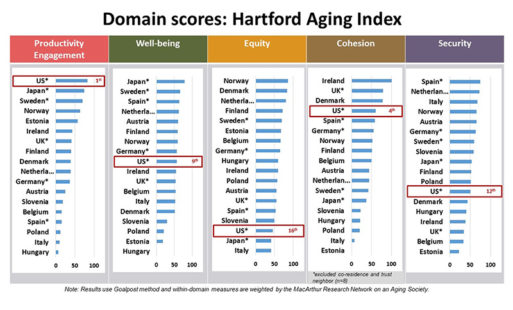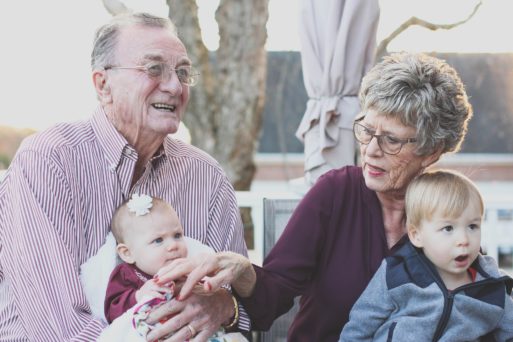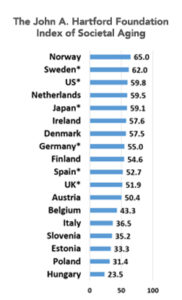Researchers from Columbia University and the University of Southern California have developed a new method to determine how well countries are caring for their elderly populations. The John A. Hartford Foundation’s Index of Societal Aging tool is composed of five social and economic indicators. These categories reflect how well a nation is “taking care” of its senior citizens. Researchers can also follow them over time and compare results to other countries.

Credit: mailman.columbia.edu
It’s no secret that people are living longer these days. According to a story from CNN, life expectancy in the United States increased “by 5.3 years for both men and women — from 73.8 years to 79.1 years — between 1980 and 2014.” During that period, men gained 6.7 years (70 to 76.7 years) and women gained four (77.5 to 81.5 years.)
With this issue in mind, many scientists believe societies should adapt their approach to caring for the elderly.
“Now that previously unimagined numbers of older persons are living longer, it is critical that we shift from our prior sole focus on the characteristics of individuals and their immediate environments to one that includes a strategy for the entire society to successfully adapt to an aging population,” said John Rowe, M.D., Julius B. Richmond Professor of Health Policy and Aging at Columbia University. Rowe led the team of researchers that developed the Index.
A sample analysis indicated the five countries dealing best with their aging populations are (in order) Norway, Sweden, the United States, the Netherlands and Japan. It’s something of a surprise to learn that the United States ranked so high, as our health care system is one of the more controversial in the world.
 “Interestingly, the Index demonstrates that the United States — despite general problems with inequity and social cohesion — has done well in keeping older Americans financially secure, productive, and engaged,” noted Dana Goldman, Ph.D., a professor from the USC Schaeffer Center for Health Policy & Economics.
“Interestingly, the Index demonstrates that the United States — despite general problems with inequity and social cohesion — has done well in keeping older Americans financially secure, productive, and engaged,” noted Dana Goldman, Ph.D., a professor from the USC Schaeffer Center for Health Policy & Economics.
The five indicators that make up the Index of Societal Aging provide new contexts for tracking elderly populations’ well-being. Indexes created in the past were not as detailed as this new edition. Past indexes focused largely on economic factors and did not fully represent the numerous inequalities that can exist within aging populations.
Components of the Index of Societal Aging

Credit: mailman.columbia.edu
The indicators that make up the Index of Societal Aging are:
- Productivity and Engagement: measures social connections within and outside the workforce
- Well-being: measures physical health
- Equity: measures the gaps in well-being and economic security between the wealthy, middle-class and lower-class
- Cohesion: measures the connectivity between generations and their socialization
- Security: measures economic support for retirement and physical safety
Dr. Rowe noted that it’s a “risky strategy” if a country does not take the necessary steps to adapt to an aging population. “If we neglect to develop and implement effective policies,” he says, “we will be left with a society rife with intergenerational tensions, characterized by enormous gaps between the haves and the have-nots, and unable to provide needed goods and services for any of its members — especially a progressively older and more dependent population.”
Even though the United States’ health care system has numerous pitfalls, it’s nice to know that we’re doing well with respect to our aging citizens.

 Index of Societal Aging Measures How Well Nations Are Adapting To An Aging Population
Index of Societal Aging Measures How Well Nations Are Adapting To An Aging Population


 Terminal Sedation at the End of Life
Terminal Sedation at the End of Life
 National Donate Life Month Reminds Us To Give
National Donate Life Month Reminds Us To Give
 How Dare You Die Now!
How Dare You Die Now!














